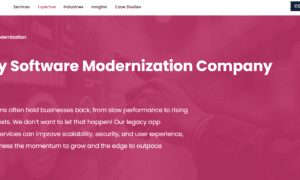As a business owner, you’re responsible for collecting data from every aspect of your business. The only way you can make sure your company enjoys continual growth is by learning from your mistakes, successes, and every action you take and don’t take.
Doing so manually, however, can be exhausting. Instead, you can create a data collection plan so that your company works in tandem to provide you with all the information you need.
Creating such a plan will help you gather key analytics and metrics on what your business needs to succeed. In this article, we’ll walk you through the steps to creating a data collection plan that will support your business.
Defining Your Objective
When creating a data collection plan for your company it is important to first define your objective. Clearly outlining your desired outcome will help guide you in your data collection process.
Ask yourself: what information do you need to have collected? What are the best data sources to use? What population should be targeted? Developing a well-structured objective will enable you to better decide which data to collect and the best way to collect it.
Identifying Your Target Audience
Creating a data collection plan for your company could be an important step in identifying your target audience. First, it is important to determine who you want to target and what data you need to collect in order to best reach them.
You should understand where your target audience exists, what they look like, and determine how they interact with the company’s products and services. Once you have this information, it is important to create a data collection plan that outlines how, when, and where you will collect this data.
Mapping Out Your Plan
In order to create a successful plan, it is important to map out the objectives and goals of your data collection project. Start by creating a list of questions, audience needs, data types, and procedures you plan to use, as well as the timeline for data collection.
It’s also important to consider and research the best technologies that might help automate your data collection process. Be sure to establish a data governance policy, which will outline how to store, access, use, and secure the collected data and establish guidelines for its use across the company.
Analyzing & Optimizing Your Data Collection Plan
When it comes to analyzing and optimizing the data, the plan should identify the types of data that should be collected, the frequency of data collection, and any software tools and resources that can be used to manage the data.
Additionally, a well-designed data collection plan should identify the cost of the data, how business data will be used and what security measures will be taken to protect the data.
By following these steps, companies can be sure to optimize their data collection plan that meets their goals and maximizes the value of their data. Consult SAN Storage Solutions to learn more about data storage and consulting.
All About Data Collection Plan
Leveraging the steps outlined and knowing what is know and what needs to be collected, your company should have a structure for planning and creating a working data collection plan.
Remember to plan for the future and regularly review the data received to adjust the data collection plan. Start collecting data now for capitalizing on your data’s potential.
Looking for more tips and ideas? We’ve got you covered. Check out some of our other posts now



































